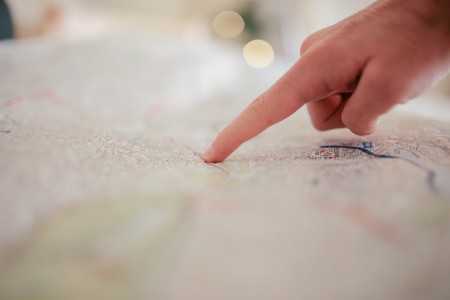As museum educators we have the remarkable opportunity to help people explore their curiosities and discover the unknown. Each day we are working to create experiences so that regardless of whether you’re a passive visitor or a deep-diver, there are ways to be engaged. We all want to achieve “something for everyone” status, if you will. This catchphrase is great in theory, but we’ve started taking a closer look at what inclusivity means to us at the Ohio History Center. We are learning that engaging “everyone” in a way that works for both parties can be tough.
We are also learning that it’s worth the work.
Conversations about inclusivity and accessibility have been happening for quite some time, but targeted programming for differently-abled individuals, especially for those on the autism spectrum, is becoming a hot topic in our field. Because of its prevalence, many people have some sort of connection to a person with autism but don’t necessarily feel like they understand exactly what all it entails —and that’s okay! Autism is a disorder that typically isn’t visible and because it exists on a spectrum, it manifests differently in each person.
As someone who has a brother with autism, I was thrilled to learn that my organization fully supported efforts to build opportunities for this population so dear to my heart. The initial process began with a few small ideas and continues to move forward through a partnership with VSA Ohio where we are working to develop an Arts & Autism Ambassador program that will provide training to arts and cultural institutions around the state.
After we started imagining ways we could widen the borders of those truly included in our “everyone,” it was obvious that we needed to make sure our plans matched the needs of the community. We explored various options and tossed around ideas that were inclusive for all populations, as well as opportunities that would provide specific access to the autism population. We researched, consulted with local organizations and benchmarked other programs at similar museums.
It was (and continues to be) a lot to process, but we are taking the time to be intentional about our actions. Moving forward I feel confident in our success because we have a clear understanding that the goal of autism-specific programming is not necessarily to provide a lesson in history, but to create a supportive and flexible environment that promotes exploration for a community with limited opportunities.
Our first big action step took place during Storybook Village, a program that brings thousands of people to Ohio Village. We partnered with the Autism Society of Central Ohio to provide a sensory friendly “take a break” space where caregivers can bring their children who are in need of a break from the overwhelming environment outside.
This is the first of many considerations we are making. We are in the process of creating a social story to help prepare patrons prior to their visit, developing maps that will show where they might experience loud noises, and taking a step back from our regular programming to find ways in which we can weave in accessibility. We want each person to walk through our doors feeling calm and confident and to leave with plans to return. With every interaction we learn a little more and continue to reexamine what an accessible experience looks like for us and for our visitors of all abilities.
Editor’s Note: Attendees of the 2016 AASLH/MMA Annual Meeting in Detroit will get an exclusive opportunity to experience and discuss the special needs tours at The Henry Ford during the AASLH Henry Ford Unconference after the Annual meeting.






